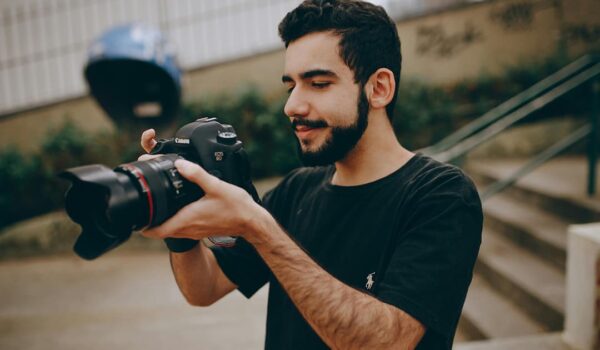This course gives a general idea of modern photojournalism and its role in the era of video and streaming. You will get acquainted with the basics of photo composition, learn what to do if you become an eyewitness of any event, and you have a camera or smartphone in your hands. You will learn how to tell photo stories, the peculiarities of photography and basic rules of behavior at rallies.
Course format
The course includes 5 modules. The modules consist of video lectures of up to 10 minutes, self-study assignments and a seven-question quiz. The videos are accompanied by transcripts and hyperlinks. If you wish, you will be able to repeat the course four times. An electronic certificate will be issued upon completion of the entire course. The course is designed for 2 weeks of study. The weekly load is 2-3 hours, taking into account the practical assignments.
Program
Module 1
Why is photojournalism still important in the era of video and streaming? Features of photojournalism in Central Asia on the example of Kazakhstan. Camera or cell phone? Can a cell phone be better than a camera? Advantage of mobile photography over professional equipment. “Don’t take pictures of me!” Ethics of photography: what can’t be filmed and what can? Is it possible to take pictures even when the characters are against it? In what cases should it be done?
Module 2
How to take a photo in such a way that everything is clear on your picture and you are not ashamed to publish it.
Module 3
News photography: why is mobility and not quality the main thing? You have witnessed an event, how not to miss a shot? “Mastery of a single shot”. How to convey the essence of the event through photography? How to keep objectivity in the frame.
Module 4
Why is it important to “make friends” between photo and text? How to do it? Preparing for the reportage: how to plan the shooting, how to find and favor the heroes, what to do if the hero refuses to be photographed. What information can we convey to the viewer? How to put together a good photo story.
Module 5
You have decided to go to a rally. What to take with you? How to behave during mass actions? How to protect yourself during rallies? A journalist and a police officer: how to build a dialog? A policeman “attacked” you. What to do? Why do law enforcers see no special difference between protesters and media workers? Arrests have begun: where and how should you film? Is it necessary to film at all?
